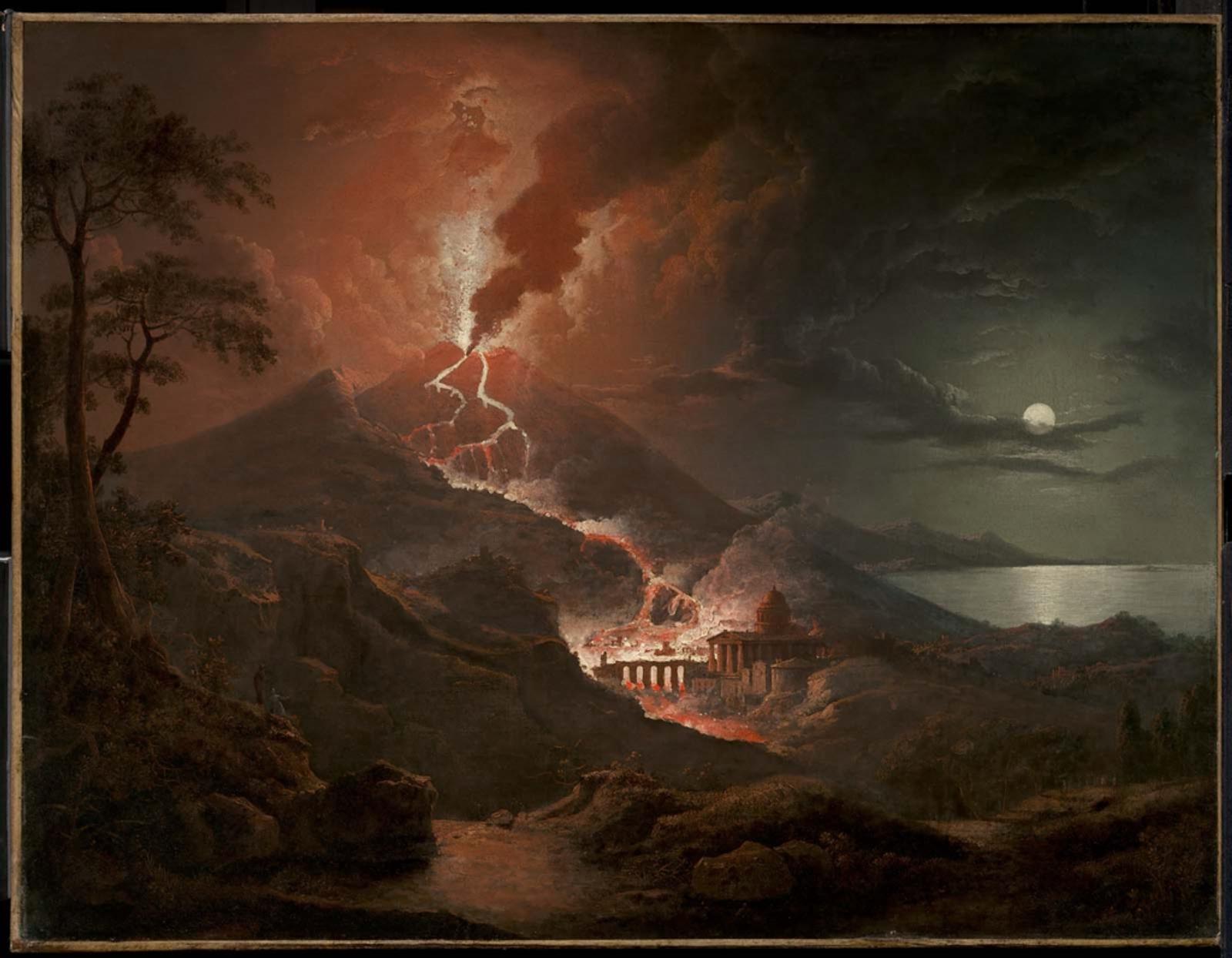Classical
An Eruption of Vesuvius by Moonlight
by Pierre-Jacques Volaire in 1774.
I like the texture of the lava and the hills. I also like the value on the clouds next to the moon, the illusion of light appears brighter on the clouds based on how close they are relative to the moon. The right half of painting looks calm and peaceful. The left half gives a glimpse of the immense power of a volcanic eruption. You can see the lava flowing from Mt. Vesuvius, which dooms the city of Pompeii. The presentation of Mt. Vesuvius is awe-inspiring and I would like to own a copy.
Eruption of Vesuvius with Destruction of a Roman City.
Painting by Sebastion Pether in 1824.
The illusion of the reflected moonlight across the water is amazing, the brightness is centered around the middle and tapers the further it travels from the center. The texture of the smoke from the eruption and the city smoke is incredible. The presentation shown elicits a sense of dread, knowing the volcano engulfed an entire city in lava. I would like to own a copy if I had space.

The Last Days of Pompeii.
by Karl Bryullov from 1830-1833.
I enjoy the linear perspective, it gives the painting an illusion of depth. The painting also presents a rhythm, all the people are trying to escape the fiery blaze. The presentation above entails a sense of empathy, everyone is fleeing for the lives. I respect this painting, but I would own a copy, it's a little dark for my taste.
The backstory of the paintings is the scientific discovery of Pompeii, artists were enthralled by painting the eruption of Mt. Vesuvius. I just find it fascinating that Pompeii remained undiscovered for almost 1700 years and much of it was well preserved.
According to Jeanne Willette from the article The Origins of Neoclassicism, contemporary artists of the 1700's and 1800's were inspired by the excavated murals and sculptures. In the article Pompeii's Influence on 18th Century Art, the article proclaimed "the eruption of Vesuvius became a recurring theme in painting throughout Europe." The discovery of Pompeii made it a popular topic when artists draw its demise. Each painting of Vesuvius is extremely dramatic and fills the viewer with a sense of awe and dread for the inhabitants of Pompeii.
Bibliography
click here for The Origins of Neoclassicism
Willette, Jeanne. “The Origins of Neoclassicism.” Art History Unstuffed, arthistoryunstuffed.com/neoclassicism/.
click here for Pompeii's Influence on 18th Century Art
“Pompeii's Influence on 18th Century Art.” Omeka RSS, omeka.wellesley.edu/piranesi-rome/exhibits/show/discovery-of-pompeii-and-hercu/pompeii-art-influence.


I love your selections for this blog! I could see two different ephemeral textures of smoke from An Eruption of Vesuvius by Moonlight and Eruption of Vesuvius with Destruction of a Roman City. I could see that people were excited about new knowledge about Pompeii and what they imagined their last day looked like.
ReplyDeleteI love the similarity between your selection, it really shows your skill in viewing and analyzing art. I think it is really cool how you kind of put a ground point on the similarities, and then went into further detail about what makes them different. I also like how you put what you actually enjoyed about the paintings in there!!
ReplyDeleteGreat choice of paintings for this blog! I enjoy the similarity in all three of the pieces in the way the colors and shadows draw you in along with the setting of An Eruption of Vesuvius By Moonlight and Eruption of Vesuvius With Destruction. I also would enjoy owning a copy of these two paintings.
ReplyDelete